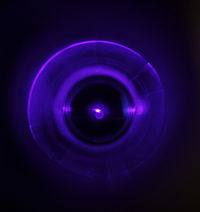LaserCooling
Contents
[hide]People
Post Docs
- Boerge Hemmerling
Grad Students
- Garrett Drayna
- Eunmi Chae
- Aakash Ravi
Overview
This experiment is investigating laser cooling and trapping methods as a route towards ultracold molecules. We first cool our species of interest to ~1K using buffer-gas cooling. After buffer-gas cooling, our species is extracted into a very slow beam, where laser cooling can proceed and stationary, 3D traps can be loaded. We are working to demonstrate the compatibility of buffer-gas cooling and laser cooling using atomic species, and we are working to demonstrate novel laser cooling methods in molecules.
Two-stage cryogenic buffer-gas cooled beams are an excellent precursors to laser cooling experiments as the thermal velocities of the atoms or molecules being cooled are comparable to the depth of traps (e.g., magneto-optical traps) [1-2]. In molecular systems, the buffer-gas cooled beams are relevant as well because they quench internal degrees of freedom (e.g., rotational) and thus create a large number of molecules in the ground state.
Laser Cooling of Diatomic Radicals (CaF)
Laser Cooling of CaF
References
- [1] Hsin-I Lu, Julia Rasmussen, Matthew J. Wright, Dave Patterson, and John M. Doyle. Phys. Chem. Chem. Phys., 2011, DOI: 10.1039/c1cp21206k.
- [2] D. Patterson and J.M. Doyle. J of Chem Phys 126, 154307 (2007).
- [3] E. S. Shuman, J. F. Barry, D. R. Glenn, and D. DeMille, Phys. Rev. Lett. 103, 223001 (2009).
- [4] E. S. Shuman, J. F. Barry, and D. DeMille. Nature 467, 820 (2010).

